Peter Rollins's Blog, page 21
January 15, 2015
Holy Ghosts, Barrington, IL
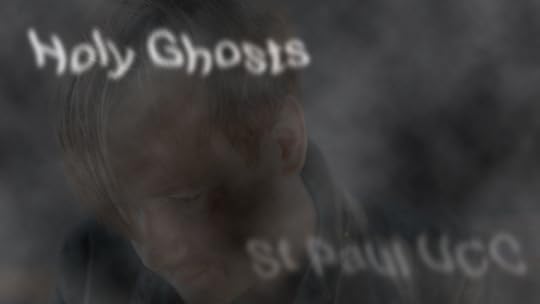
I’ll be speaking on the Friday night and Saturday morning at St. Paul UCC. On the Friday evening at 7pm I’ll be giving a talk entitled “The Three Fingered Gesture: Uncovering the Error that Speaks a Truth.” On the Saturday, from 10-1, there will be an event called “Finding Salvation in the Other: A Talk and Conversation with Peter Rollins.” Both will take place at 401 E. Main St. Barrington, IL 60010.
More information to follow shortly.
Holy Ghosts, Barrington, Il

I’ll be speaking on the Friday night and Saturday morning at St. Paul UCC. On the Friday evening I’ll be giving a talk entitled “The Three Fingered Gesture: Uncovering the Error that Speaks a Truth.” On the Saturday, from 10-1, there will be an event called “Finding Salvation in the Other: A Talk and Conversation with Peter Rollins.”
More information to follow shortly.
Subverting the Norm, Drury University, MO
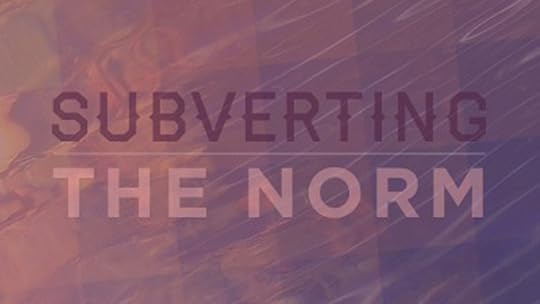
Subverting the Norm is a three-day event that brings together pastors, theologians, philosophers, church practitioners, researchers in religion and all those interested in exploring the relationship between postmodern theologies and church practice. Some of the questions that will be considered at the third Subverting the Norm include:
- Is postmodern theology and religious practice insufficiently political, at least insofar as it plays out in academic and church circles?
- In what ways is the work of religious thought offered by postmodern theologies also a work of political thought?
- Can these theologies open theoretical and practical possibilities for collective resistance and for social, political, economic and ecological transformation?
- Are religious collectives and churches contributing to a new and distinct approach to socio-political transformation? Or do postmodern religious collectives and communal practices mimic rather than challenge the contemporary political, social and economic cultures they intend to avoid?
- Why do so many strains of the postmodern religious conversation (death of God theologies, postsecular philosophies, radical theologies, and emergent church practices) – despite emphases on the other – tend to be dominated by white male voices that are usually from significant privilege? And what might these postmodern theologies learn from theological traditions that more often place questions of power and politics at their centre, such as liberation, feminist, queer, and postcolonial theologies?
- If established churches and collectives are to be faithful to the revolutionary event that gave birth to Christianity, how might they be informed by such approaches to political theology?
For updates and more information, click on the link
Rupture, Revelation, Revolution, Online
[image error]
Over March and April I’ll be teaming up again with Tripp Fuller to explore the recent return to Paul among many philosophers and theologians. While some of this is taking place within confessional institutions, there has been a renewed interest in reading Paul in a secular way: as a revolutionary figure who offers us a way of thinking about subversive political actions and alternative means of structuring community. In this six week course – that will include readings, lectures and a live event – we’ll delve into this important and enlivening discussions.
More information to follow.
January 11, 2015
Touring with Jay Bakker

As many of you know, last year I packed my car and drove across the country to my new home on the West Coast. On the way I spoke at around ten different locations as part of my “In Exile” tour. Sadly, I couldn’t fit my beloved books in the car and ended up leaving my entire library boxed up in CT.
Recently I chatted to Jay Bakker about my lost library and he suggested that we go pick up the books, then drive them to LA. In this way way we could combine a road trip with a joint tour. I got to say that the whole idea sounded fun. So basically, if we can find enough places to stop along the way, we’re going to do it.
This is where you come in. If you live somewhere in the semi-circle above, and are interested in us coming (probably in May), then fire your details over to admin@peterrollins.net.
This will cost a little cash and require some planning, so you need to have access to buildings, money and people.
This is long shot… but with your help it might just happen!
January 10, 2015
Divine Magician Launch, LA, CA
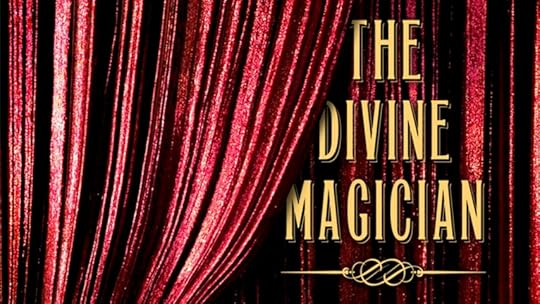
I’ll be giving a short talk on my new book, there will be some for sale, and we will have a couple of glasses of wine. I hope you can come along an celebrate with me! We’ll be at 343 South Church Lane, LA, 90049 at 11:45.
Hocus Pocus: Introduction to The Divine Magician
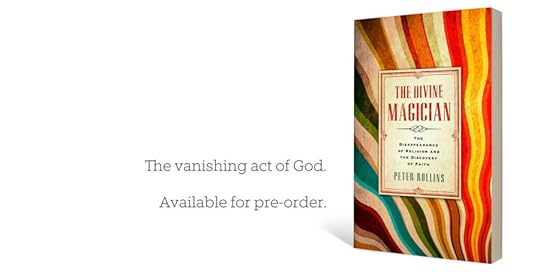
“More-traditional Christians will undoubtedly find Rollins’s book a theological provocation, as he takes familiar parables, characters, and terms… and rewrites their conventional interpretations. Yet Rollins also disturbs the theologically liberal, and even the avowedly secular”
Publishers Weekly
It’s been a long time coming, but The Divine Magician will be dropping immanently. In this book I’m attempting to offer a subversive way of reading Christianity. A reading that not only offers a challenge to conservative/liberal/progressive readings, but also to the cultured despisers of Christianity. This week two reviews came out, both of which show an understanding and appreciation of my project: one from Publishers weekly and the other from The Dubious Disciple.
But, in addition to this reviews, I wanted to offer you a taster for the book by giving you the introduction. If you like this, please do consider sharing it and maybe even buying the book. Thanks!
Years ago I was taught how to perform a simple vanishing trick. Taking a quarter from a friend, I’d hold it in both hands and rub it firmly on a tabletop. After this, I’d take the quarter in my right hand, place my left elbow on the surface of a table, lean in close, and rub the coin against my bare forearm. I’d repeat this act of rubbing the coin on the table and then against my forearm four or five times until the coin would finally seem to “dissolve” into my arm. Then, when my friend asked where the coin had gone, I’d lift a nearby pint to reveal how it had been transported magically across the table only to reappear under the glass.
Like most magic tricks, the whole illusion rested on some pretty simple sleight of hand and a little misdirection. The sleight of hand involved getting my audience used to the idea that I always lifted the quarter with my right hand after rubbing it on the table. Once this had been established, I would switch and lift it with my left hand. With some carefully placed misdirection, people would be momentarily distracted at the point of the switch and so continue to assume that the quarter was in my right hand.
Manufacturing the disappearance was now a simple matter of rubbing my empty right hand against my elbow, as if the coin were still there, before slowly revealing that it was actually gone.
There was, of course, still the issue of getting rid of the coin that was hidden in my left hand. After all, this would be one of the first places people would look once they realized it wasn’t where they expected it to be. This was not, however, difficult to do, for when my left elbow touched the table, my left hand naturally rested at the same level as the back of my neck. While everyone was distracted, I simply hid the coin there.
When the quarter was shown to have disappeared, I’d quickly present both of my hands for observation, thus directing their attention away from where the coin actually was.
In contrast to the disappearance, the return was easy—a few minutes before announcing the trick, I’d clandestinely place a different quarter under a glass on the table. As people were checking my arm and hands, I’d lift the glass to reveal the coin that I’d hidden before the trick even began.
This little illusion contains the three basic elements of a classical vanishing act:
1. An object is presented to the audience
2. This object is made to disappear
3. The object then miraculously reappears
In the film The Prestige, directed by Christopher Nolan (adapted from Christopher Priest’s book of the same name), these three stages are called:
1. The Pledge
2. The Turn
3. The Prestige
In the coin trick above, we see each of these stages clearly at work. The Pledge represented the part of the illusion where I would ask for a quarter and let everyone examine it. The Turn took place when I made the quarter look as if it had dissolved into my arm. Finally, the Prestige was the point when I lifted my glass to reveal the “return” of the lost quarter.
In addition to these three basic elements—Pledge, Turn, Prestige—a good vanishing act also involves two other components: a little patter (the magician’s distracting talk) and the use of some esoteric incantation uttered at the key moment of the Turn.
Both of these elements have some interesting connections with the Christian world.
The term patter is most likely derived from paternoster, a word that refers to the repetitive, mesmerizing prayers used by nuns and monks in religious orders. For the medieval magician, their own distracting talk had a similar trancelike result as the repetitive prayers of the monks, helping to make the audience less aware of what was going on around them.
In a similar way, one of the most popular “magic phrases” used by magicians in the seventeenth century was hocus-pocus, a term most likely parodying the proclamation hoc est corpus (this is my body)uttered by priests during Mass.
It was Archbishop of Canterbury John Tillotson who first noted this interesting connection in the late 1600s. In one of his published sermons, Tillotson preached that the magician’s words were nothing more than a “ridiculous imitation of the priests of the Church of Rome in their trick of Transubstantiation.”
For Tillotson, just as the magician only pretended that something supernatural was happening during the vanishing act, so, too, the Catholic priest during the Eucharist, as he proclaimed that the bread and wine were transformed into the actual body and blood of Christ upon his blessing. Both were stage shows of a sort, a fancy game of deception designed to take in and amaze their respective audiences. Both, Tillotson said, falsely claimed to be part of something supernatural: one in the name of some dark powers, the other in the name of God.
The magician would make an object disappear then reappear.
The priest would preside over the transformation of the bread and wine into the body and blood of Christ.
For Tillotson, hoc est corpus was as impotent and ignoble an incantation as hocus-pocus. In pointing this out, he wanted to ridicule and discredit the theory of transubstantiation, exposing it as nothing but a cheap parlor game played by a cynical or naïve institution to confound their congregants.
For Tillotson, the authentic Eucharistic meal had nothing whatsoever to do with superstitious hocus-pocus, but was rather a solemn act of ritualistic remembrance. Thus, in contrast to the idea of the bread and wine changing their essence, he affirmed the Communion meal’s straightforward, pragmatic significance as a reminder of Christ’s Resurrection in the lives of individual believers.
No doubt the church today would share in Tillotson’s desire to distance the Eucharist from a mundane magic trick. Whether they would seek to affirm the meal as an act of remembrance or, instead, claim that something supernatural was taking place, no church authority would equate this central sacrament with that of a mere conjuring act. Any such comparison to playing a game would be wholly rejected.
However, what if one of the best ways of understanding the earth-shattering, deeply life transforming meaning of the Eucharist—indeed, the core proclamation of Christianity itself—is precisely by looking at it as a vanishing act?
What if Tillotson was right in seeing a connection between a magic trick and the Eucharist . . . but wrong in thinking that this took away from its significance and mocked it?
A parlor trick.
A cosmic sleight of hand.
What if we witness this three-part sacramental act as a fundamental irreligious movement that has nothing to do with theism or atheism, or with doctrines, dogmas, or denominations? But rather as an event that we participate in and that takes what we hold as most sacred, makes it disappear before our very eyes, and then returns it to us in an utterly different way.
Through partaking in Communion, the Pledge, the Turn, and the Prestige are sacramentally reenacted. First there is the presentation, or Pledge, of the sacred as an object in the bread and wine. Then there is the disappearance, or Turn, of this sacred-object in the consumption. Finally there is the Prestige—the return of the sacred through a realization that we are the body that we consumed, “Now you are the body of Christ, and each one of you is a part of it.”
The Eucharist, then, becomes a snapshot of our Christianity as a whole. And looking beyond the Eucharist, I hope to show how Christianity—or rather the “event” that is dimly testified to in Christianity—comprises a spectacle that is as scandalous to the world as it is transformative. As we progress, we will see that this event is a stumbling block to the church and foolishness to the cultured elite, but it is good news for the rest of us.
So without further ado, ladies and gentlemen, boys and girls, take your seats and let the curtain rise on what might well be the most incredible, most spectacular vanishing act in the history of the world . . .
January 5, 2015
Stetson University, DeLand, FL
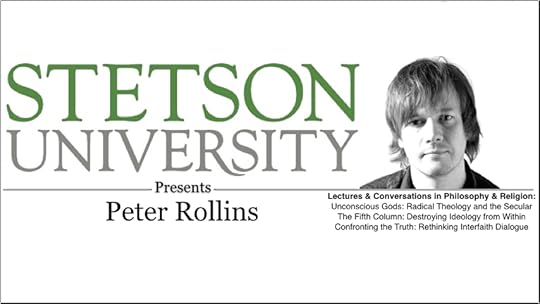
At Stetson University I’ll be spending three days doing a series of talks, discussions and debates. I’ll be giving the Stetson Lecture entitled “Philosophy at the intersection of Religion and Secular Humanism” at 7pm in the Allen Hall. I’ll also be working with the philosophy Club and Cross Cultural Center. More information to follow.
Free Ticket to Tricks of the Light
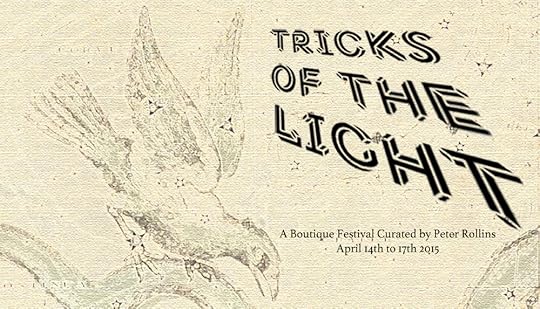
Only a few years ago my festival was nothing more than a little star in the sky. Conceived with my friend Adam one rainy January night in 2013 in a Belfast bar, our child is now approaching its third year! We’re both very proud parents.
I wanted to draw talented people from around the world to engage seriously in the work of pyrotheology, but before chatting to my friend, it was hard to believe it could actually happen.
Yet here I am, in 2015, putting the finishing touches on an event that marks the centerpiece of my work. If this festival is half as good as the previous ones, I’d be delighted. But it’s already shaping up to be the best one yet.
We’re still four months out and already sold out.
But there is one last chance to get a ticket.
A couple of weeks ago a charitable organization called Koinonia Trust approached us with a very generous offer. They gave us funding that allowed us to bring in an additional contributor as well as provide a free place to some lucky individual.
So, Willy Wonka style, we’ve a golden ticket to offer. Basically this is for someone who would LOVE to attend the festival, but who doesn’t have the financial means to book a place. You don’t need to buy any chocolate to apply. All you need to do is answer two basic questions:
1. Why do you want to go to the festival?
2. Can you afford the other costs associated with it? (there’s costs associated with travel, food, socialising and accommodation. We need to know that you can cover all these and won’t be sleeping on the street).
You don’t need to write an essay. Something between 200-400 combined would be great. Then send the answers to admin@peterrollins.net.
We’re going to put a deadline of 18th January for submissions. And we’ll announce who got the bursary by 23rd January (so as to give plenty of time for you to get transport sorted).
You can find out more information about the festival here, or watch the video below.
January 4, 2015
You Make it Wierd (with Pete Holmes)

http://peterrollins.net/wp-content/uploads/2015/01/YMIW238_Peter_Rollins.mp3
In this interview I chat with the brilliant Pete Holmes about meaning, pain, ghosts, parking, family and everything in between, One of my favorite ever interviews. Hope you like it.
Peter Rollins's Blog
- Peter Rollins's profile
- 314 followers



